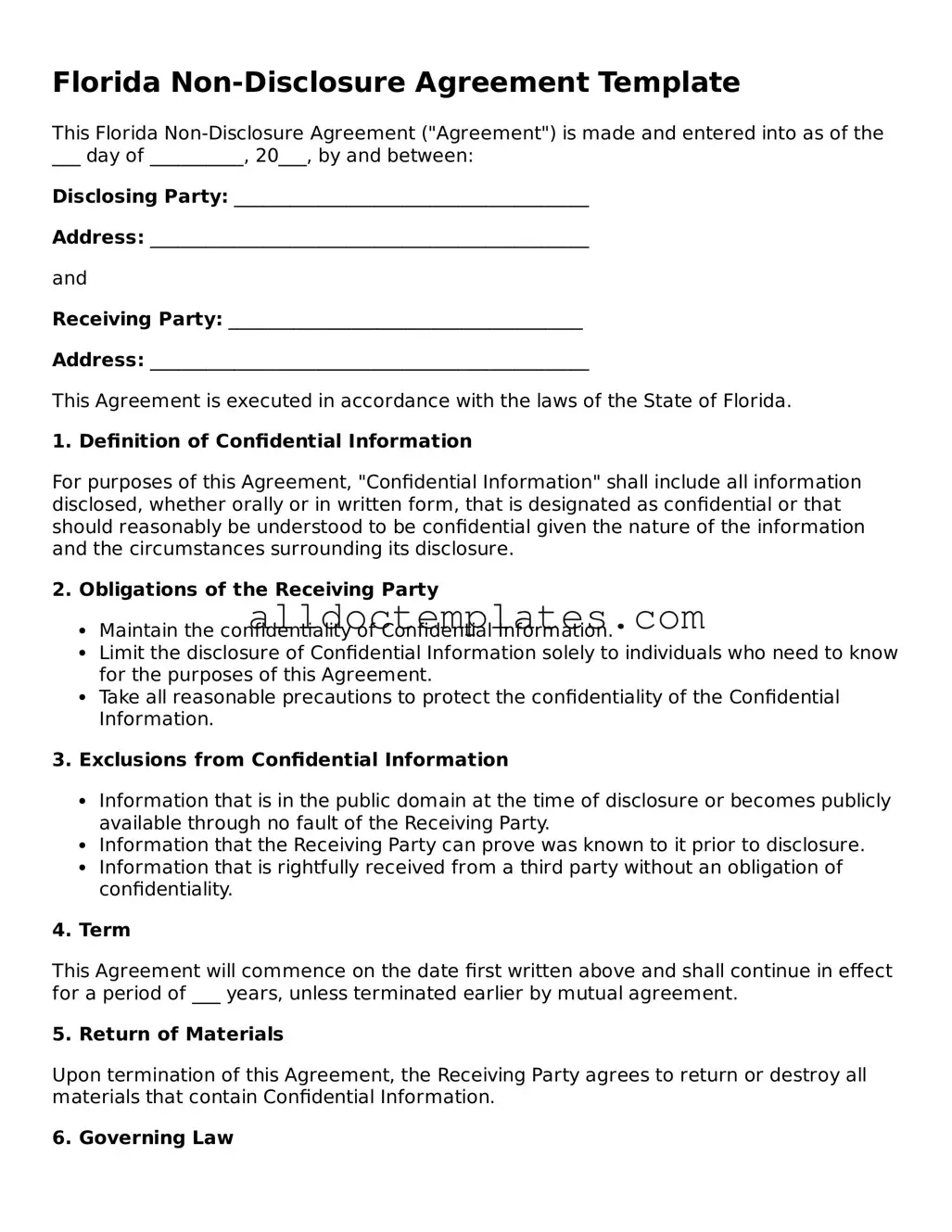Florida Non-Disclosure Agreement Template
This Florida Non-Disclosure Agreement ("Agreement") is made and entered into as of the ___ day of __________, 20___, by and between:
Disclosing Party: ______________________________________
Address: _______________________________________________
and
Receiving Party: ______________________________________
Address: _______________________________________________
This Agreement is executed in accordance with the laws of the State of Florida.
1. Definition of Confidential Information
For purposes of this Agreement, "Confidential Information" shall include all information disclosed, whether orally or in written form, that is designated as confidential or that should reasonably be understood to be confidential given the nature of the information and the circumstances surrounding its disclosure.
2. Obligations of the Receiving Party
- Maintain the confidentiality of Confidential Information.
- Limit the disclosure of Confidential Information solely to individuals who need to know for the purposes of this Agreement.
- Take all reasonable precautions to protect the confidentiality of the Confidential Information.
3. Exclusions from Confidential Information
- Information that is in the public domain at the time of disclosure or becomes publicly available through no fault of the Receiving Party.
- Information that the Receiving Party can prove was known to it prior to disclosure.
- Information that is rightfully received from a third party without an obligation of confidentiality.
4. Term
This Agreement will commence on the date first written above and shall continue in effect for a period of ___ years, unless terminated earlier by mutual agreement.
5. Return of Materials
Upon termination of this Agreement, the Receiving Party agrees to return or destroy all materials that contain Confidential Information.
6. Governing Law
This Agreement shall be governed by and construed in accordance with the laws of the State of Florida.
IN WITNESS WHEREOF, the parties hereto have executed this Non-Disclosure Agreement as of the date first above written.
Disclosing Party:
Signature: ___________________________________
Name: ________________________________________
Title: ________________________________________
Receiving Party:
Signature: ___________________________________
Name: ________________________________________
Title: ________________________________________
This template serves as a clear framework, ensuring that both parties understand their responsibilities regarding confidential information in the state of Florida. Each section is designed to protect the interests of the disclosing party while clarifying what is expected from the receiving party. Always consider consulting with a legal professional to tailor agreements to your specific situation.
